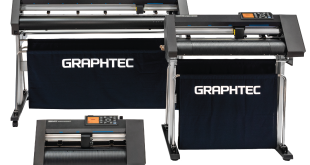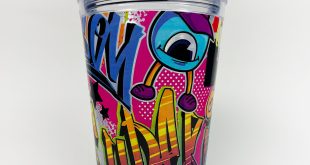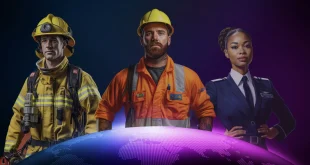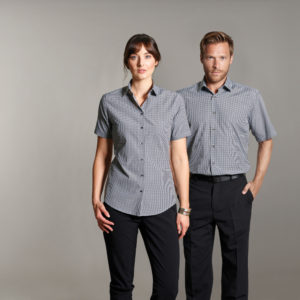
Experts from across the corporate world have shared their views on dressing down, what to wear and when and what you can expect from corporate fashion going forward.
Q) Has the traditional suit gone out of fashion?
Lucy Woodward, marketing and development manager, Disley: Wearer demands are undeniably more diverse and the traditional ‘one size, fits all’ uniform is long gone. The need for a variety of fits and styles within the same range, is greater than ever and in the sense that appearance is inextricably linked with service, it remains vital that uniforms convey a sleek, professional image.
Teri-Louise Deegan, marketing executive, Prestige Leisure: The traditional suit will always have a place in our wardrobes; it’s classic, timeless and no gentleman would ever be without one. However, it’s everyday use is quickly becoming a thing of the past.
Laura Dutton, marketing executive, Premier Clothing: We all have our favourite go-to suit in our corporate wardrobe and the great news is that it doesn’t necessarily have to go out of fashion – it all about the way you style it out.
At Premier we like the professional and polished look that only a suit can bring to the occasion. Whether it’s a super-skinny or a tailored classic, if it’s styled and accessorised to reflect the latest trends, we can’t see why it will ever fall out of fashion.
Mark Dix, director, The Outdoors Company: We’ve seen a huge rise in demand for corporatewear, workwear and promo apparel with a more urban feel to mirror the trends on the high street, which just softens the traditional formal look.
Mid-layers, soft shells, 3in1 jackets and insulated gilets from premium outdoor brands, like The North Face, Columbia and Patagonia, help to take the edge off the formal look which can sometimes be off-putting to a customer or client, while offering excellent opportunities to dual-brand and align a brand with a market leader.
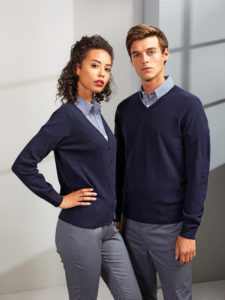
Q) Is dress down the way forward?
TD: The rise in informal working environments continues to grow, personified by the trendy start-up companies willing to do business in double denim. This has helped shape the shift in attitude towards the corporate wardrobe. There is an ever-increasing call for comfort, which has caused the polo to take its place as the garment of choice for business across all sectors – from offices to building sites.
LD: Many companies embrace the smart-casual approach but at the same time don’t want to compromise their professional image in front of customers. The mainstay of any smart corporate uniform will always be a shirt, but then allowing staff the flexibility to style the shirt how they choose should be encouraged.
A company shirt worn open-collared with the sleeves neatly rolled up and paired with a pair of chinos is a great dress-down look but still has a sharp corporate edge. A polo shirt could be considered a casual alternative to a shirt, with the collar and buttoned placket ensuring that this remains a smart choice.
MD: With wellbeing and the appetite for premium retail brands in the workplace on the increase, companies are easing up on levels of formality in the workplace, encouraging employees to feel more comfortable in work to raise productivity.
Q) Can you give an indication of what styles of corporatewear suit which job roles and/or sectors?
LW: Each customer’s demands are uniquely different, it’s arguably the supplier’s greatest challenge to create products that are as interchangeable as possible, to provide the maximum wearer flexibility, while also allowing for complete brand consistency.
The smart choice goes for something that bridges the gap – a modern classic- tailored fit, a well- constructed, but neat collar in a contemporary fabric. Working as well behind the scenes as on the front desk, with or without a tie.
Printed blouses used to be the preserve of the doctor’s surgery or hospital reception desk, but more modern, simple designs and contemporary round neck blouse designs, have seen them move into front of house roles in the most elegant of hotels.
Hard working environments will always demand equally resilient garments, whether that’s a security guard’s pilot shirt or a waitress’s blouse, garments that can withstand the rigours of washing and wearing, while still conveying the required sense of luxury and importance.
In hospitality checks and fabric interest can really be of service, take the Rosheen and Lurgan gingham shirts from Disley for example, the monochrome check is distinctive, masks stains and launders with ease.
TD: We are now seeing that chinos are becoming an accepted alternative to the traditional business trouser in the office, and even denim is throwing off its Saturday shackles and finding its way into the 9-5 wardrobe. That being said, there will always be a market for the crisp, formal shirt with a modern take.
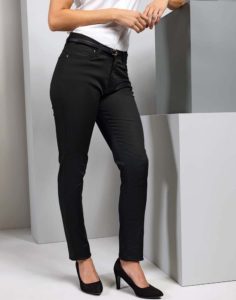
LD: Here’s what I suggest. For field sales teams corporate knitwear is a great idea as they need to layer up in colder weather. Knitwear also provides a fantastic base for company logo to be embroidered, so they can be easily identifiable when visiting customers.
As front of house/ reception staff are quite often the customer’s first contact at a company, a polished look is needed. Shirts and blouses with accompanying neckwear to reflect the company’s brand colour is ideal here.
In the logistics/ warehousing sector where a uniform is quite often provided by the company, an easycare polo shirt with moisture management wicking properties should be considered here due to the physical nature of the work involved.
MD: The extent to which companies are changing their corporatewear image depends on the sector, the culture of the company, the products and services they offer, and perhaps even their heritage/ longevity. For instance, in the outdoors, automotive, fitness and IT services sectors, companies are steering toward smart chinos / jeans, and smart/casual shirt with a premium brand insulated gilet, perfect for displaying the company logo.
In other sectors, there’s still a place for the formal suit – but the look has evolved. For people attending meetings or customer visits, we’re noticing requests for soft shells or 3-in-1 jackets just to soften the sharpness of the formal suit style.
Arc’teryx – one of our newest premium brand partners – has specifically redesigned select top styles from their outdoor line to provide corporate clients with options where branding is paramount. They offer consistent colour sets available to both men and women, with men’s sizing up to size XXXL to complement more formal attires. The Arc’teryx logo has been relocated from the chest to provide a brand with full access to the front of the garment.
 Printwear & Promotion The Total Promotional Package
Printwear & Promotion The Total Promotional Package
